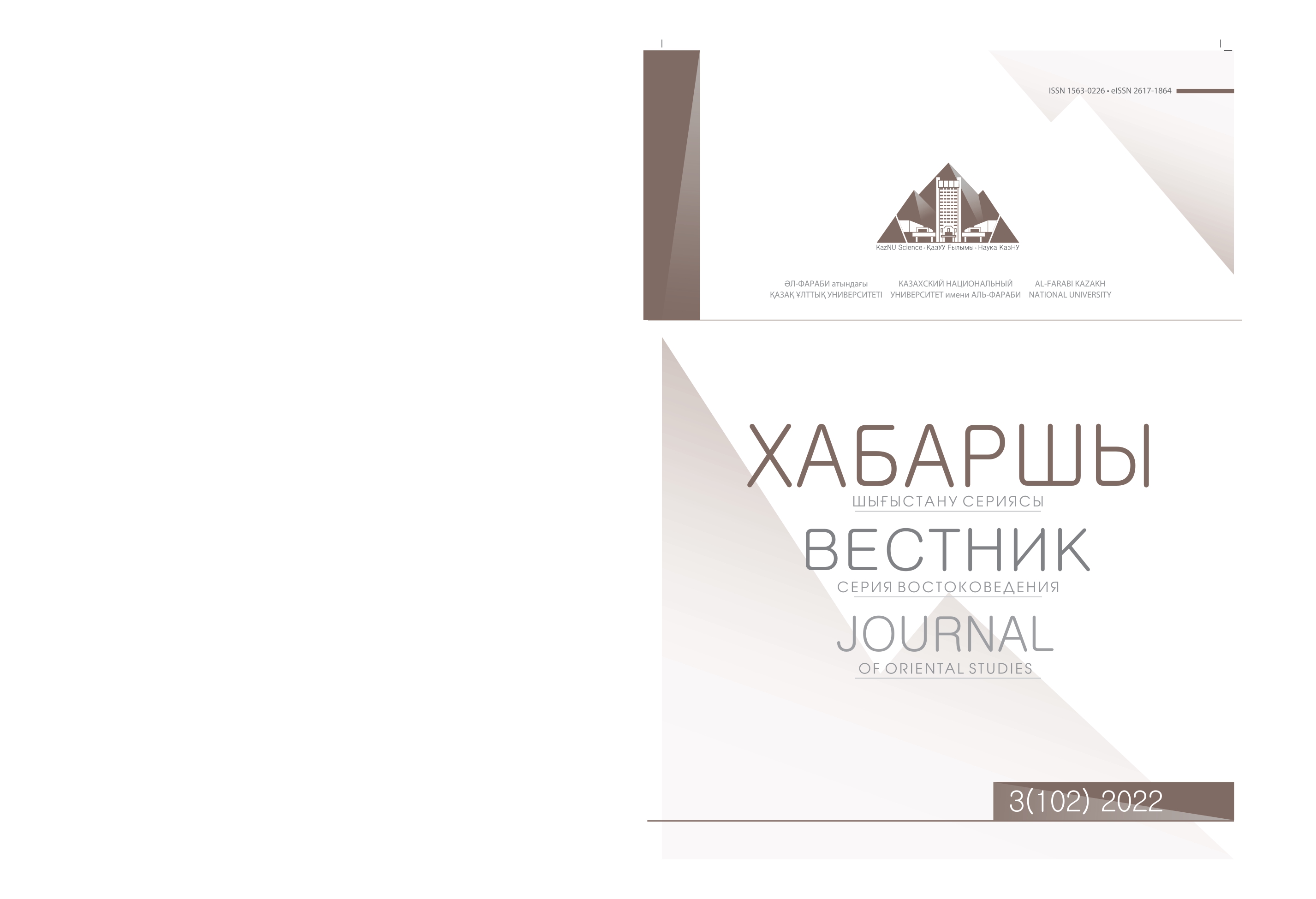Исследование средневековых кипчакско-арабских словарей
DOI:
https://doi.org/10.26577/JOS.2022.v102.i3.03Аннотация
Известно, что в архивах и библиотеках мира хранятся рукописные памятники казахскому народу. Известно, что многие из этих памятников изучены европейскими, российскими востоковедами и другими зарубежными и отечественными востоковедами-тюркологами. Один из таких рукописных памятников представляет собой ценные реликвии языков, относящихся к кипчакской группе, включая историческую фонетику, лексику, морфологию казахского языка XIII-XIV вв. Со стороны мамлюкских кипчаков в Египте написан труд «Тарджуман...». Этот труд является кыпчакско-арабским словарем, написанным с целью обучения арабов кыпчакскому языку. При сравнении работ ученых, изучавших и переводивших труд, отмечалось отсутствие последовательности в транскрипции и значениях некоторых кыпчакских слов. Мы, в этой статье, до сих пор сравниваем кыпчакские слова в переводах и исследовательские работы над трудом «Тәржүман...». Изучив толкования на арабском языке, приведенные в оригинале, раскрываем смысл и выясняем причины придания различных значений кыпчакским словам в исследовательских работах и переводах. Кроме того, транскрипции и значения различных слов Кыпчака уникальны. Изучая арабские толкования рукописи, выявляется тюркский корень некоторых арабизмов, тюркский эквивалент которых забыт на казахском языке.
Ключевые слова. «Тарджуман…», кыпчакский язык, арабский язык, кыпчакско-арабский словарь




